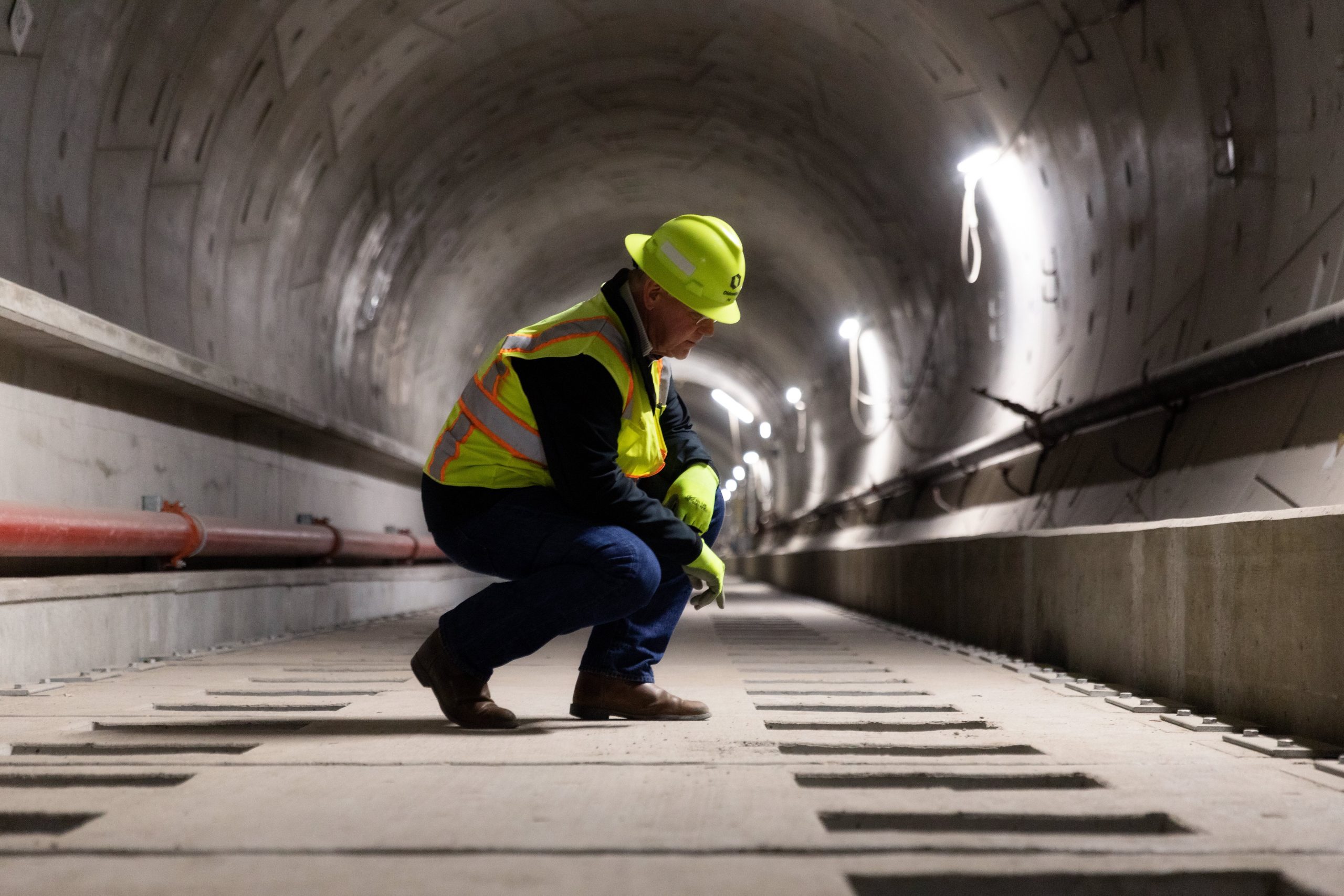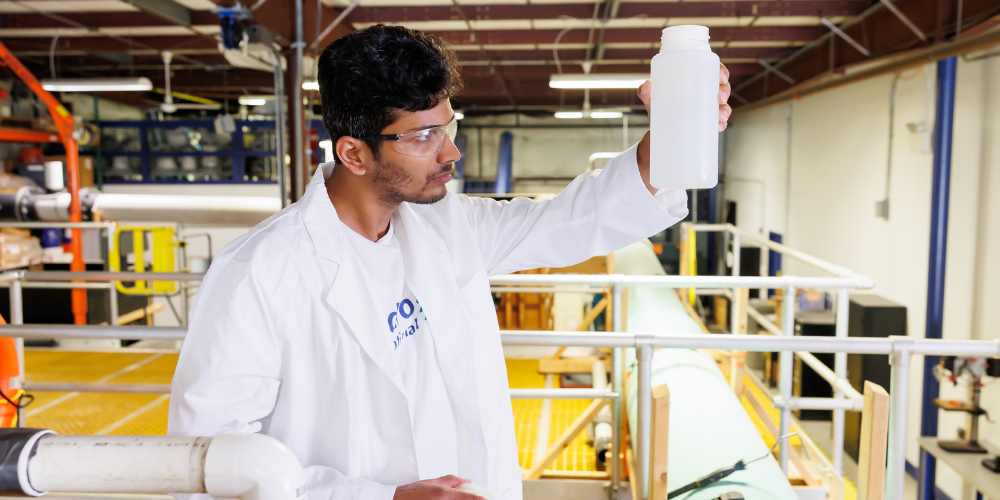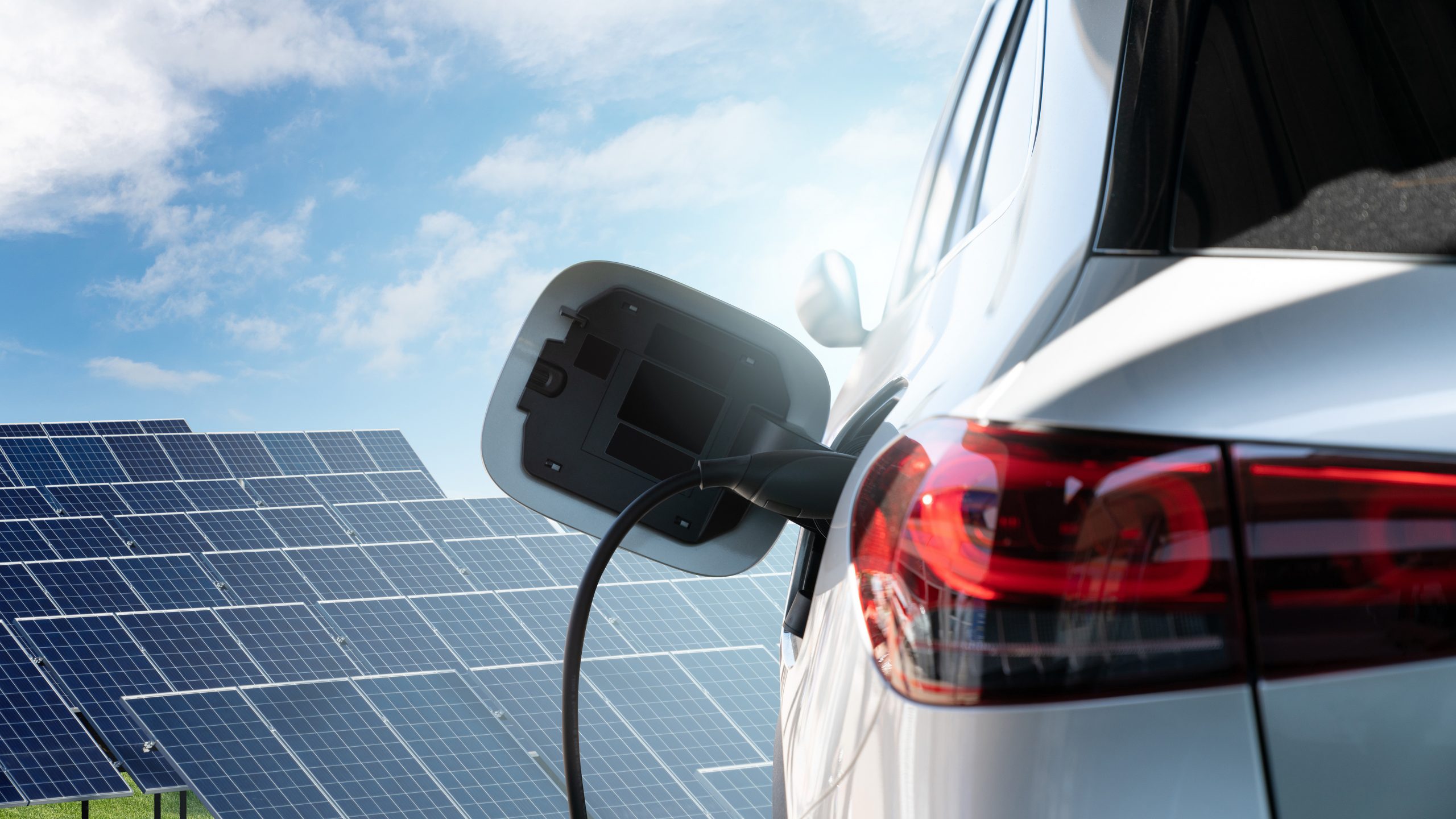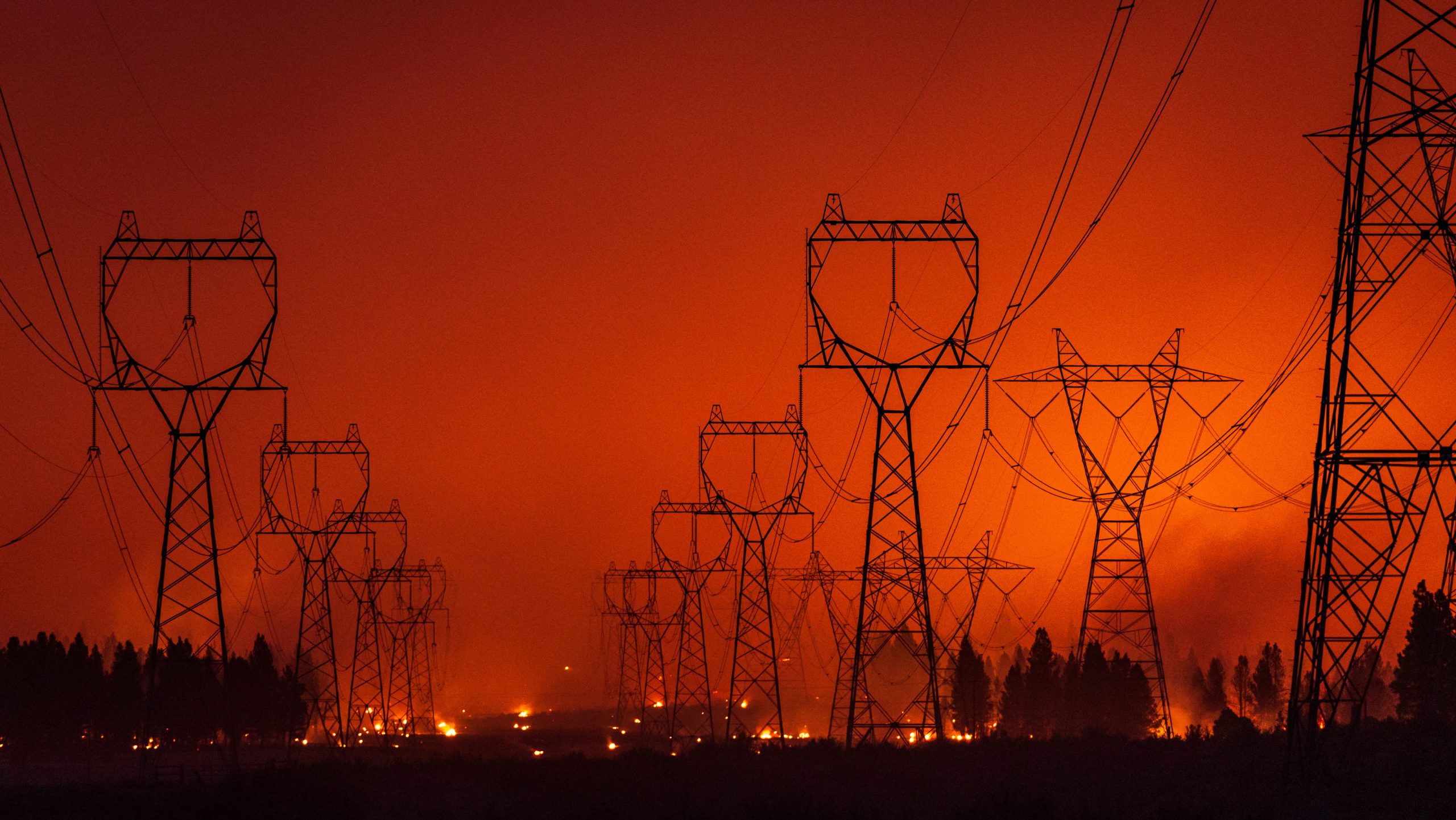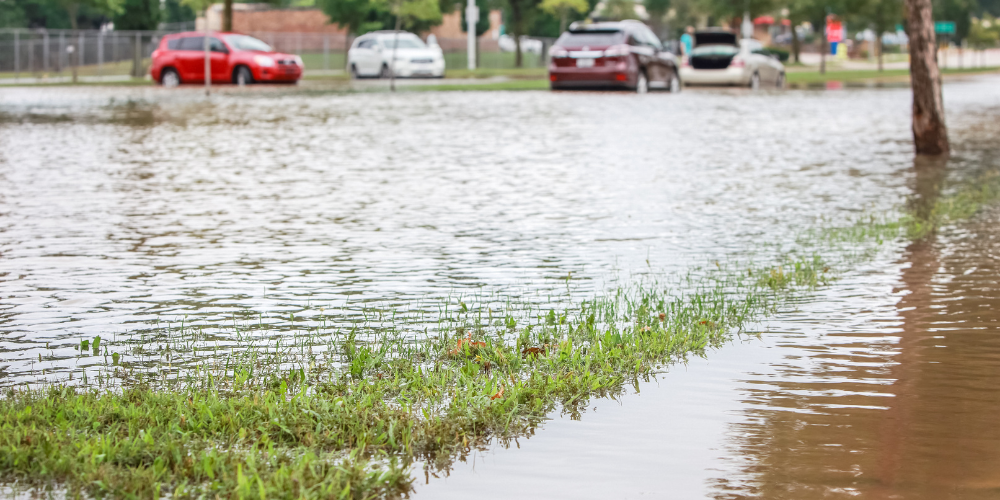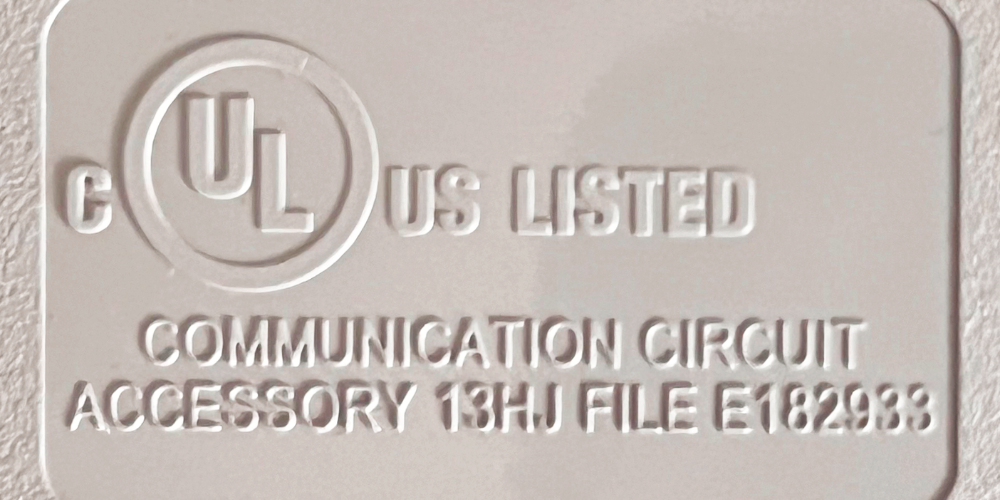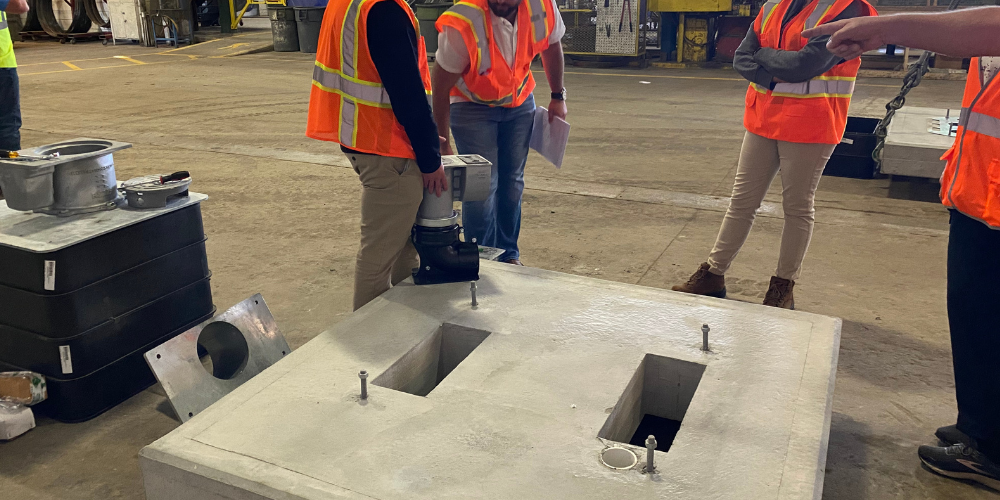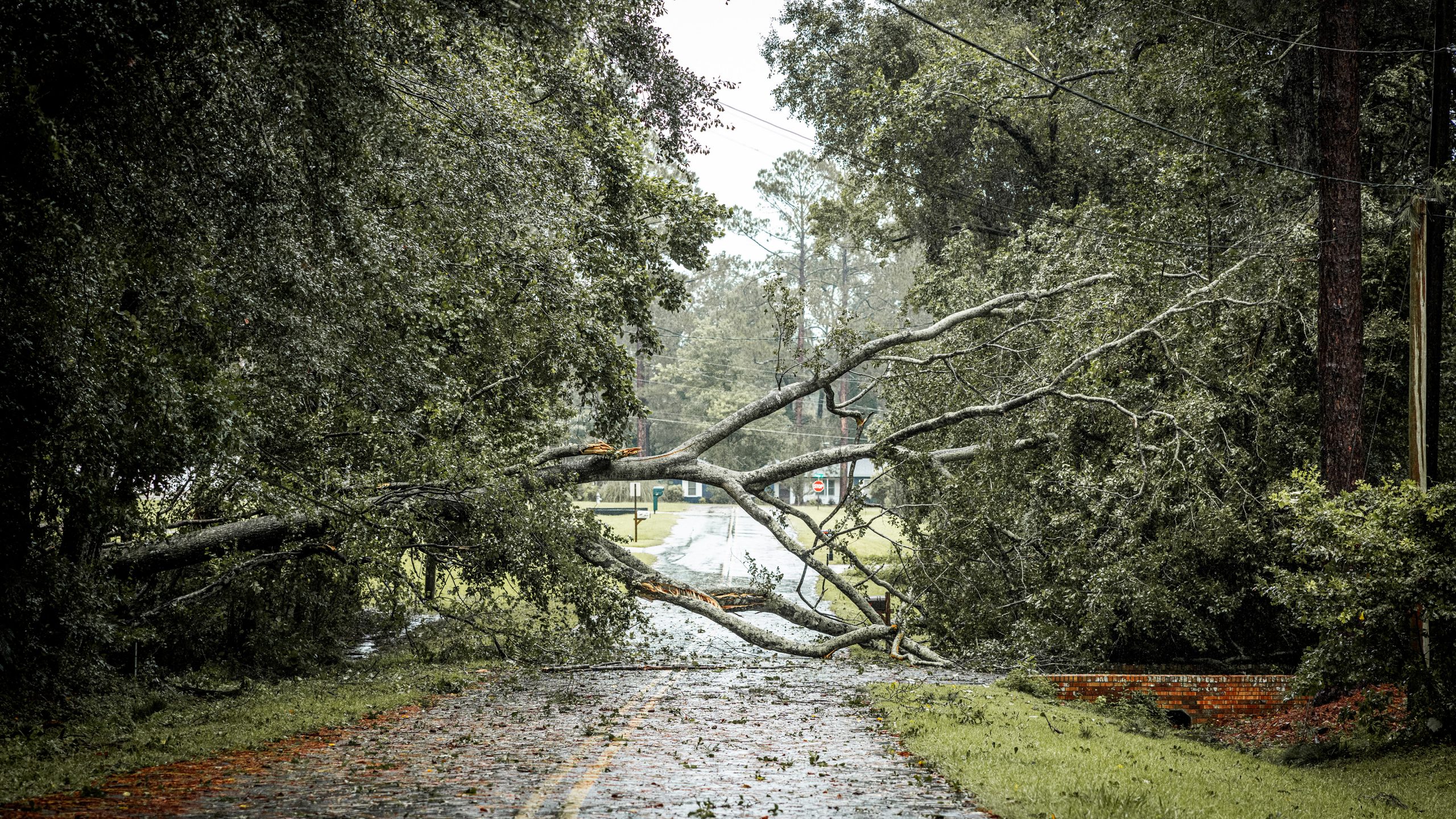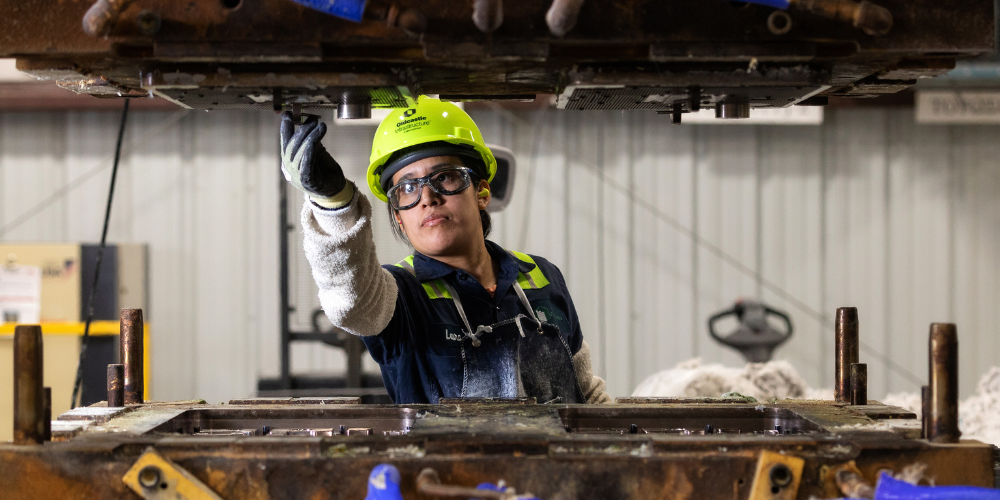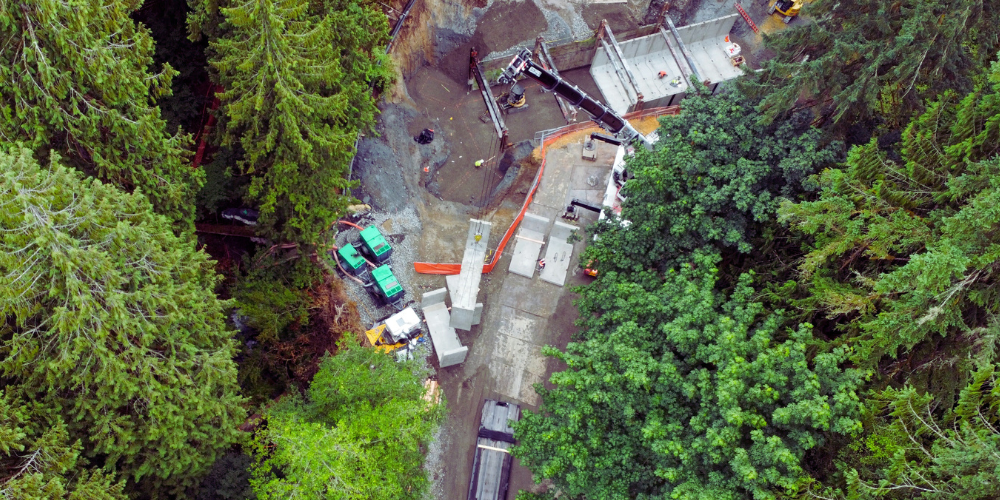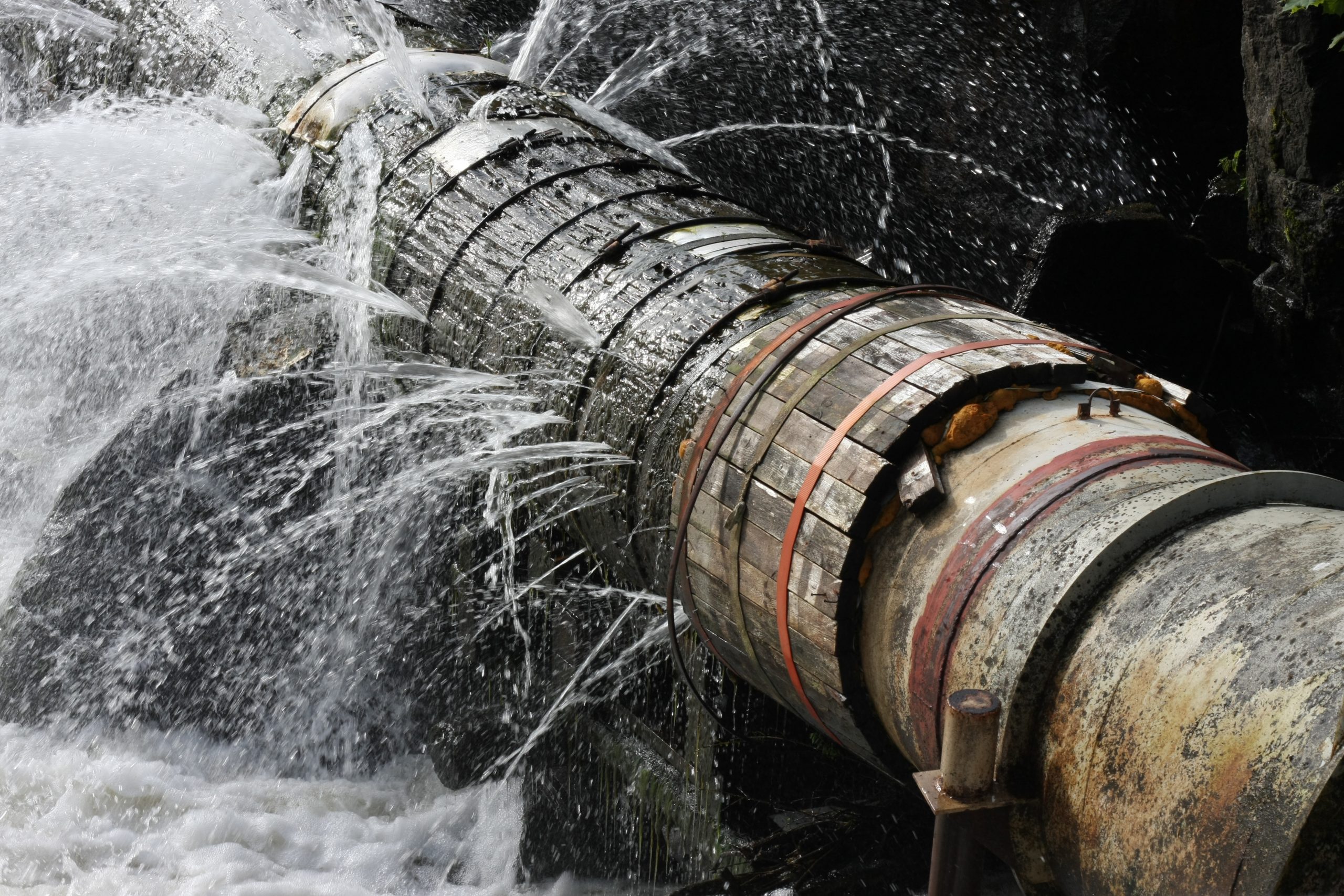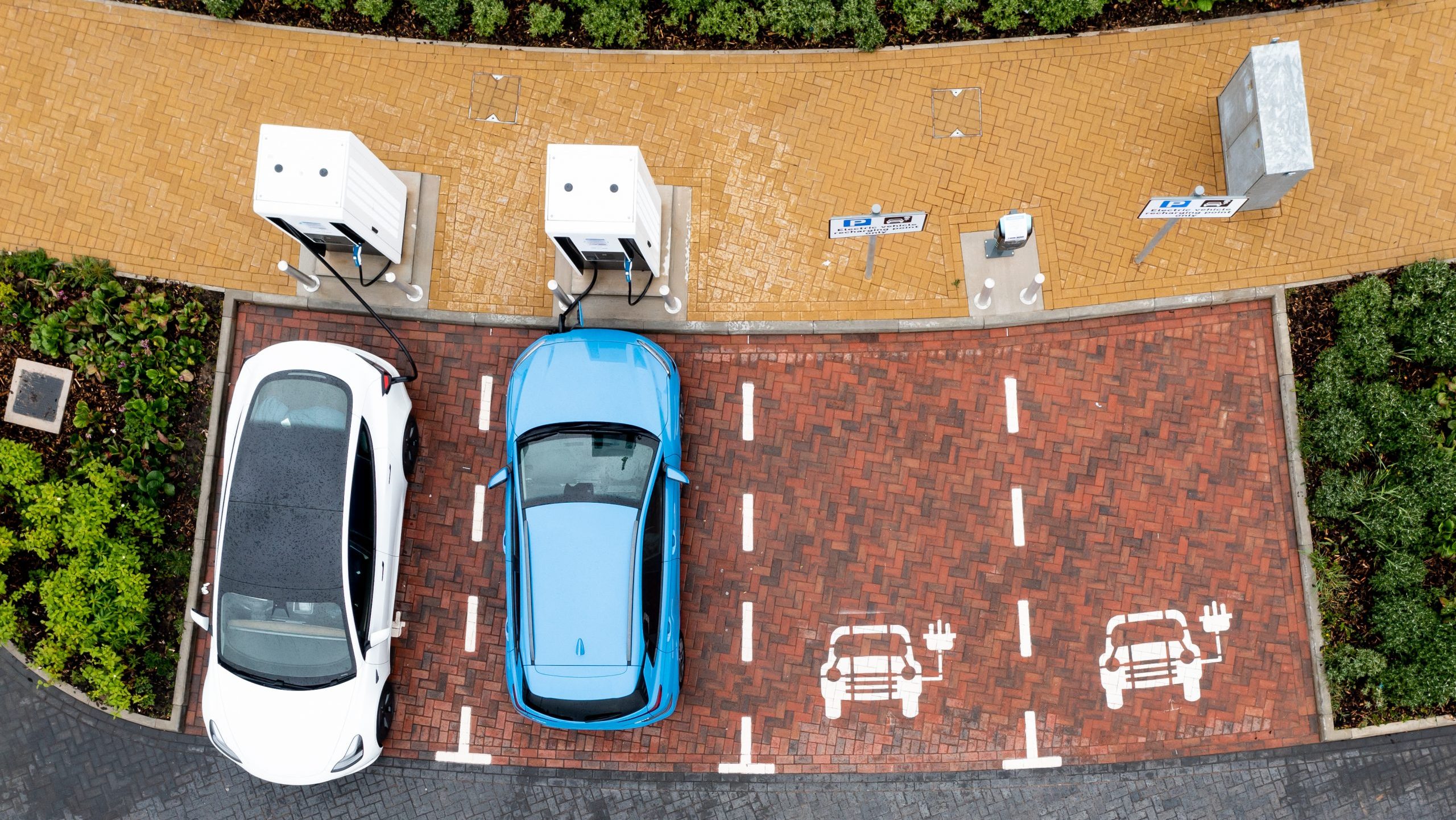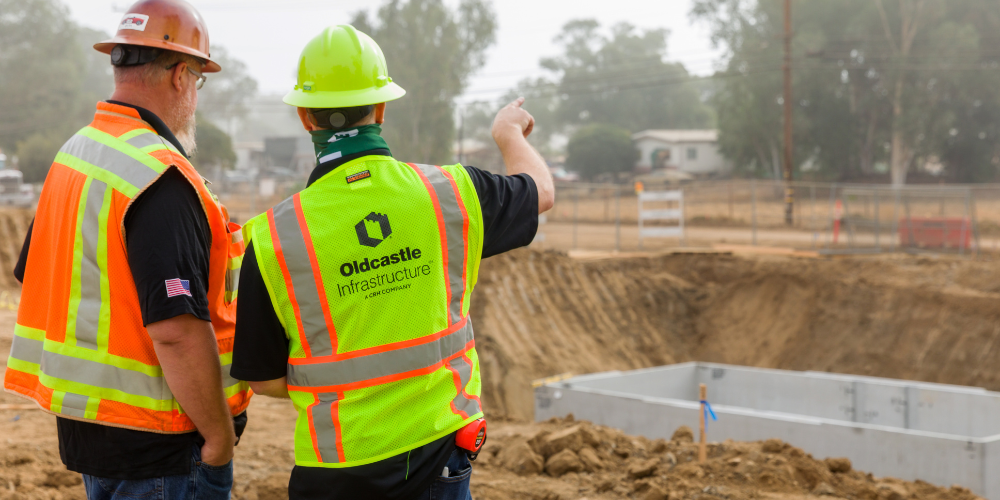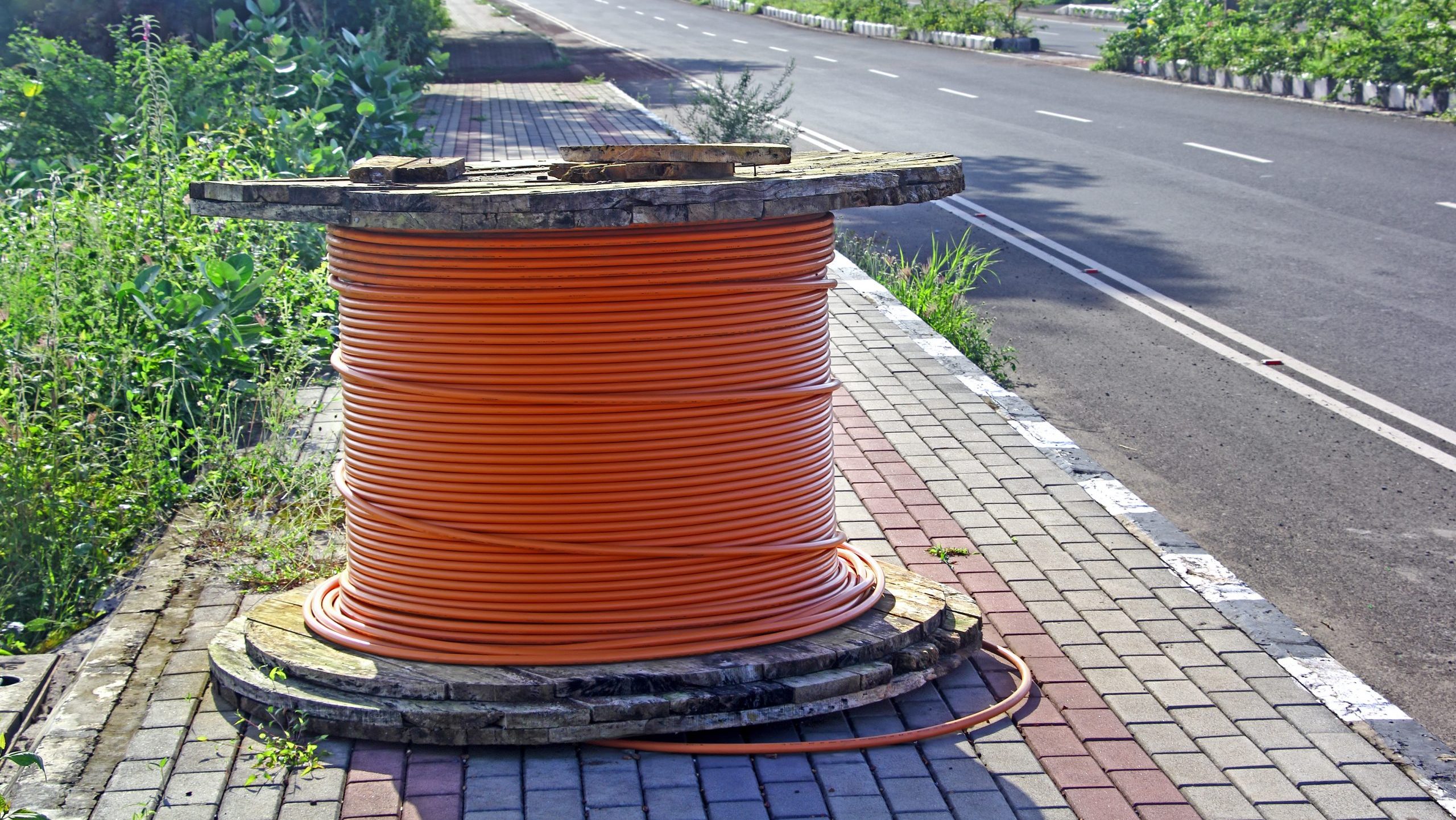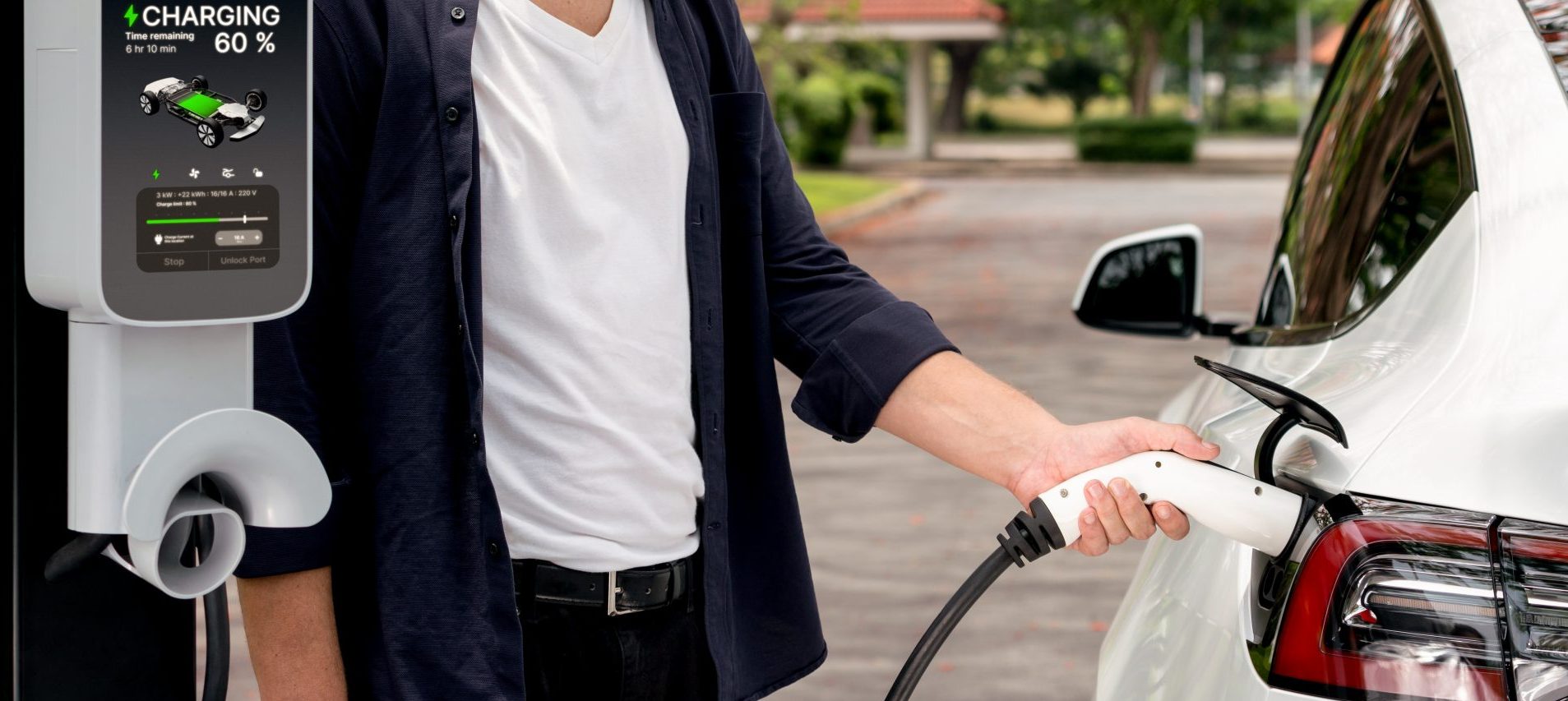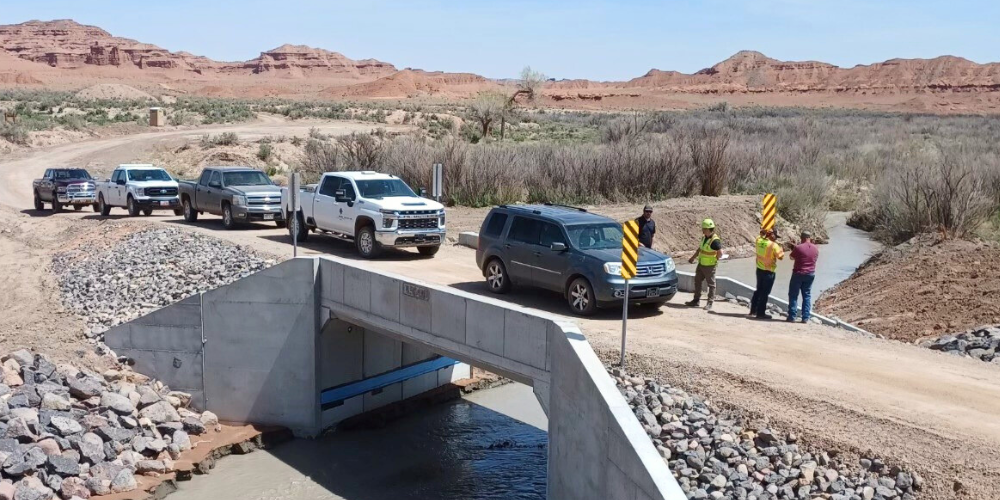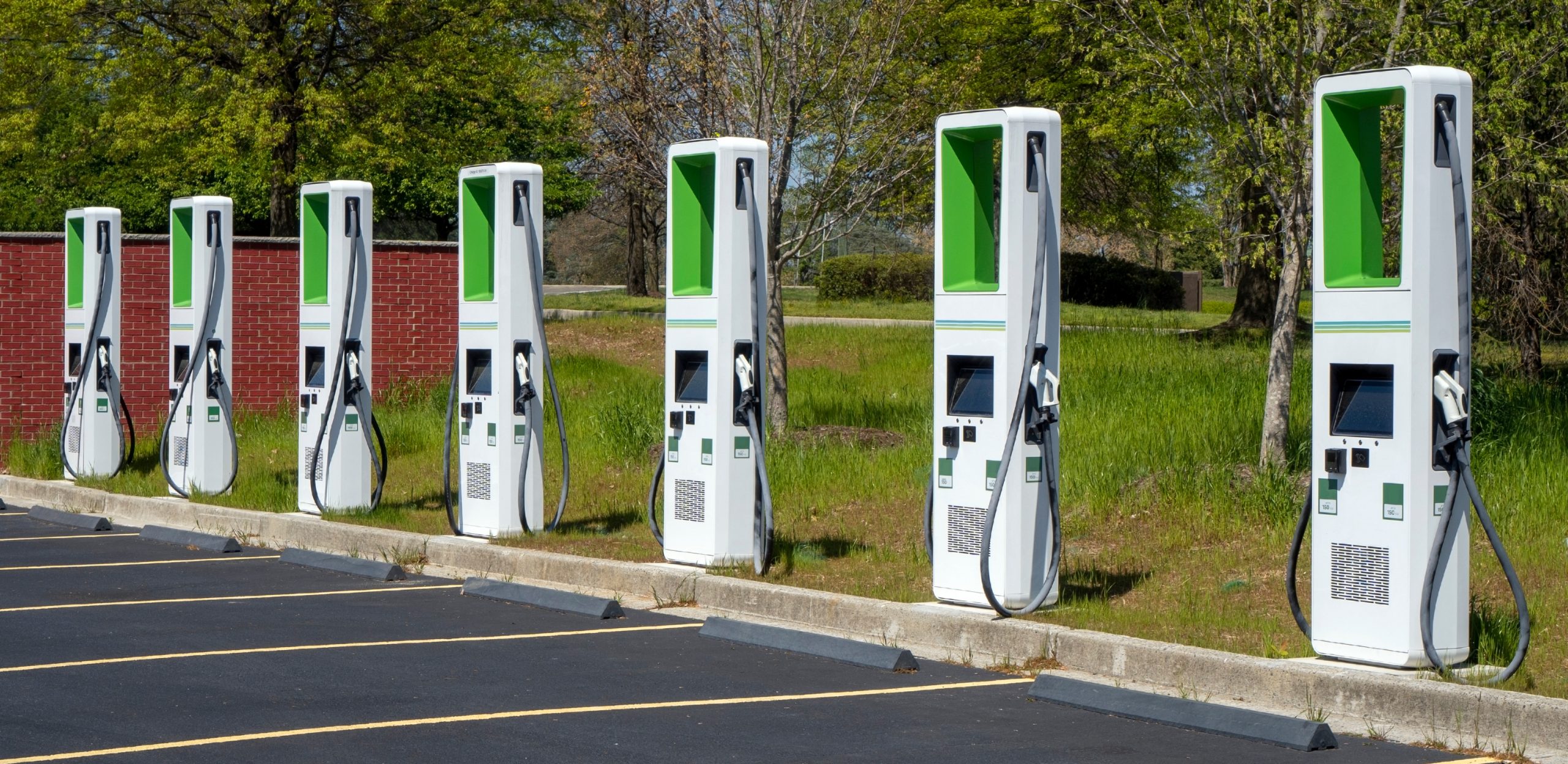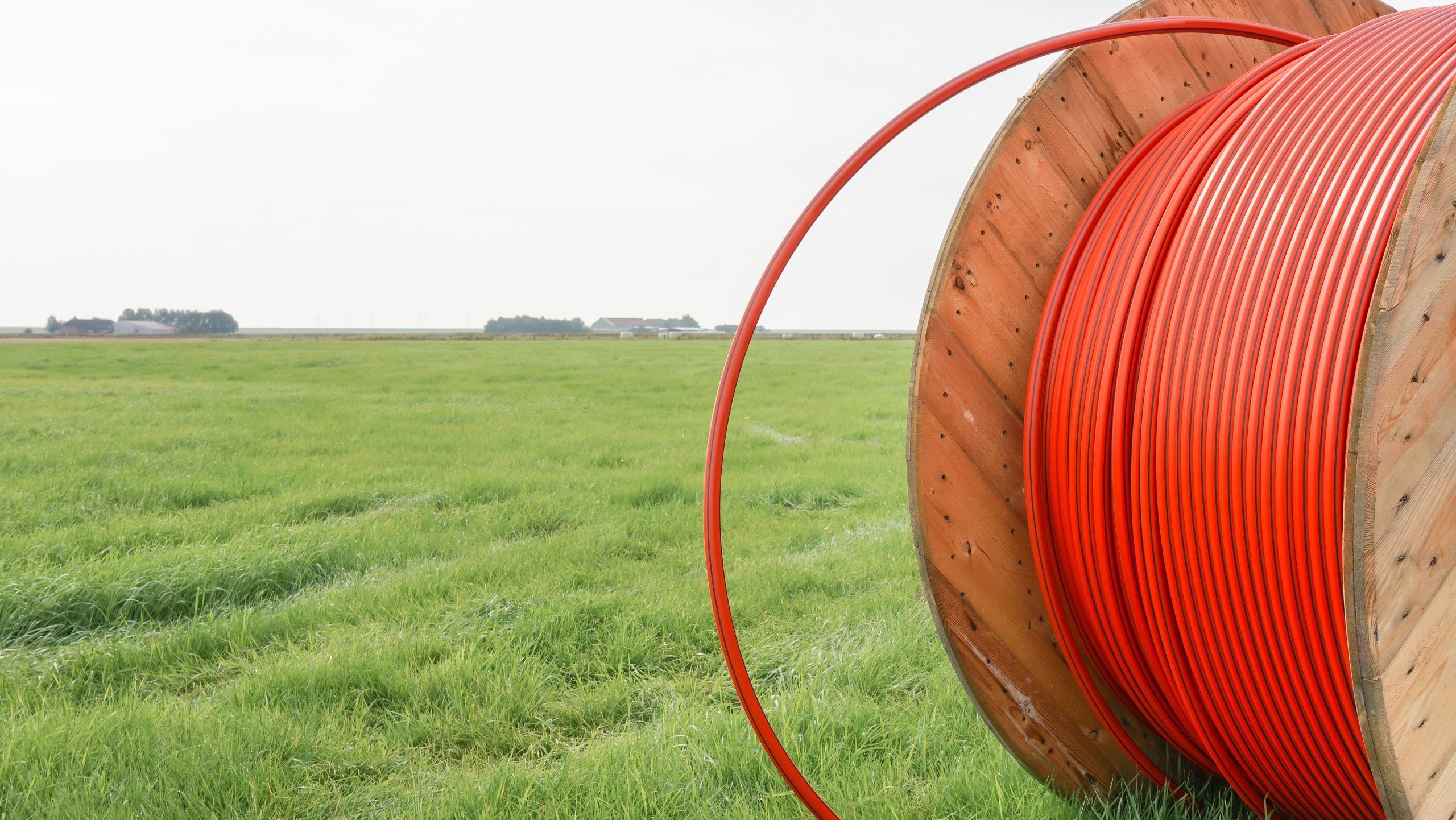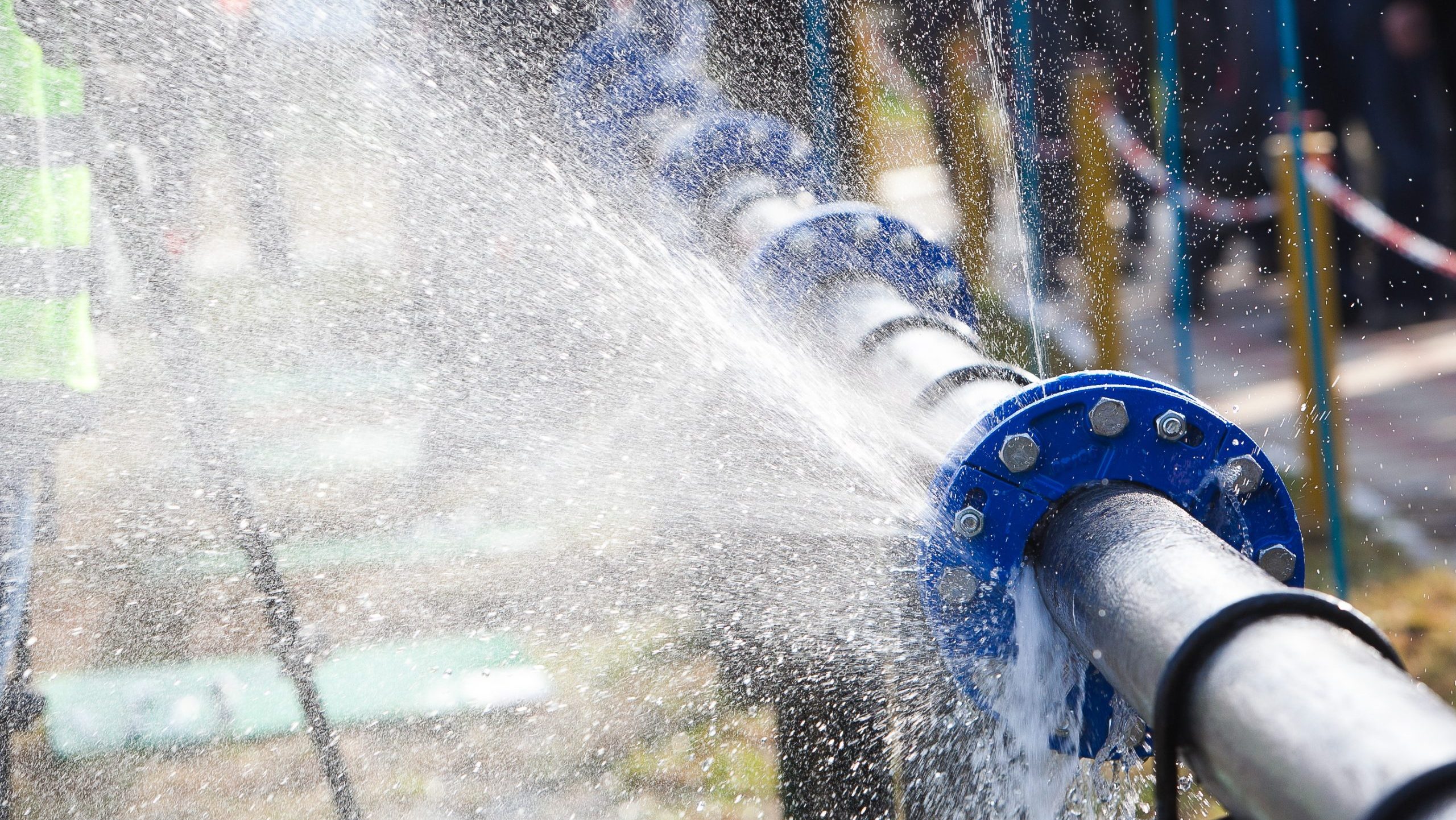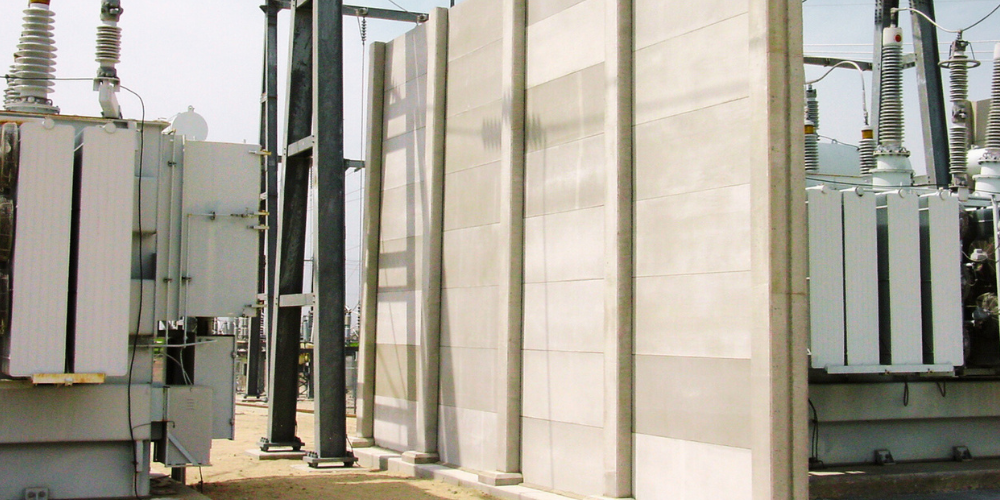In the foundational world of rail transport, where any delay incurs significant costs, efficient and reliable infrastructure is crucial. Oldcastle Infrastructure’s StarTrack Rail Crossing Systems have provided over 30 years of dependable performance. With their robust, modular designs, these systems not only simplify installation but also significantly reduce operational disruptions. This efficiency is vital, as it helps prevent traffic delays and supports smooth operations, ensuring punctual and reliable transportation solutions.
The core advantage of StarTrack systems lies in their modular design. Traditional rail crossing installations typically span several days, requiring extensive planning and leading to significant service interruptions. In contrast, StarTrack’s modular panels can be installed swiftly—often over a single weekend. This drastic reduction in downtime is not just a logistical achievement; it represents a shift towards greater respect for time and resources in rail infrastructure projects.
The speed of installation also brings substantial economic benefits. By minimizing labor costs and reducing the need for prolonged traffic management, StarTrack systems offer a cost-effective solution that appeals to both small municipal bodies and large-scale industrial operations. This efficiency is further enhanced by the system’s design, which allows for individual modules to be replaced without the need to overhaul the entire crossing, thereby simplifying maintenance and extending the lifespan of the rail infrastructure.
Another significant advantage of the StarTrack system is its robust supply chain strategy. Recognizing the challenges often associated with long lead times in traditional rail crossing projects, StarTrack has optimized its production and inventory processes. By coordinating four major manufacturing plants, Oldcastle Infrastructure ensures a ready supply of modules, prepared to be deployed as soon as projects commence. This readiness not only positions StarTrack as a reliable partner in urgent or time-sensitive projects but also helps alleviate common supply chain bottlenecks faced by the industry.
Safety remains at the forefront of the StarTrack design philosophy. The high-strength concrete used in the modules guarantees durability against the physical stresses of rail traffic, while the inclusion of standard, easily replaceable accessories ensures that maintenance does not lead to extended downtimes. These features collectively enhance the safety profile of rail crossings, making them less prone to failures and accidents.
The StarTrack Rail Crossing Systems represent a significant step forward in the modernization of rail infrastructure. By combining speed, efficiency, safety, and adaptability, StarTrack is setting new standards for what is possible in rail crossing technology. As the industry looks to future challenges, from increased traffic to the need for sustainable solutions, StarTrack continues to innovate, ensuring that rail remains a vital and viable component of global transportation infrastructure for decades to come. Visit our StarTrack Rail Solutions page to explore our innovative solutions and see how we’re enhancing rail transportation.
Oldcastle Infrastructure has made significant investments in water research capabilities, including the acquisition of two companies centered around their hydraulics labs.
What’s going on in these laboratories, and why are they so important? And how do they help to advance solutions that solve global water challenges?
Solving water infrastructure challenges through innovation
Improving the world’s water infrastructure requires innovative products, and Oldcastle’s hydraulics laboratories are at the center of this research and development.
These labs allow for an expert understanding of the scientific principles of fluid mechanics, opening possibilities in a wide range of markets and applications. From the smallest stormwater quality manhole to the largest municipal wastewater treatment plant, the fundamental processes of solid-liquid separation are the same regardless of scale or purpose.
The result of this commonality is that labs like those in Oldcastle’s Portland, Maine facility can leverage knowledge gained in one market, such as stormwater management, to develop improved solutions in another market, like wastewater treatment.
New product development can get a head start when the seed for innovation can be imported from an adjacent technology.
Certified compliance and proven performance
Outside of new product development, hydraulics laboratories serve two key testing functions.
Protocol testing verifies that equipment will comply with the stringent requirements set forth by regulatory bodies. The results of these tests assure regulators and the public that the treatment technology performs as claimed and is safe for implementation in the built environment.
The Oldcastle Water Lab (OWL) in Mississauga, Ontario has years of experience navigating the intricacies of regulatory test protocols for a wide range of stormwater treatment technologies ranging from hydrodynamic separators to cartridge filters to engineered biofiltration systems.
Performance testing, on the other hand, pushes equipment beyond its recommended limits. The valuable data gained by this experience allows CRH’s engineers to understand how the equipment behaves under extreme conditions. The results of these tests can then be incorporated into the next generation of products, improving overall reliability and system performance.
To put water treatment systems through Protocol and Performance testing, a best-in-class lab needs:
- A large-scale water reservoir: A substantial water supply, temperature controlled and recirculated, is essential for conducting high flow rate experiments.
- Advanced filtration systems: Maintaining water cleanliness is critical for accurate testing and test protocol compliance.
- Configurable tank systems: The ability to configure tanks as a single unit or separate compartments offers maximum flexibility for various testing scenarios.
- An expert team: The real value of a hydraulics lab is in the expertise of the people designing the tests, interpreting the data and applying the findings.
From prototype to product
The development of effective water treatment technologies is an iterative process and the testing described above is just one part of the whole journey.
Just as full-scale tests are important for proving system efficacy, bench-scale experiments like media columns, scale models and small-scale test tanks, allow for initial concept validation and identification of factors influencing performance.
Once these small-scale “proof-of-concept” systems are working as desired, they can then be scaled up and tested at full scale within the same facility.
Finally, an integrated analysis lab is essential for interpreting test data from experiments at any scale. Equipment like balances, sieves and filters along with hydrometers and spectrophotometers allow for detailed analysis of water samples, providing a clear picture of a technology’s effectiveness in removing both solid and dissolved pollutants.
Bringing this analysis expertise in-house allows the team working on the product to learn and adapt as quickly as possible.
Investing in a sustainable future
At the forefront of sustainable water management, hydraulic labs embody Oldcastle Infrastructure’s commitment to pushing the boundaries of innovation and ensuring the reliability of water treatment technologies.
This continued investment in hydraulics R&D isn’t just a strategy; it’s a pledge to future generations to manage our water resources wisely and sustainably.
Through these efforts, Oldcastle Infrastructure, as a key part of CRH, is not merely tackling today’s water management challenges but is also laying the groundwork for a future where water resources are safeguarded, showcasing the power of blending scientific exploration with practical application.
Next
As we wrap up our initial series on the transformative journey of the National Electric Vehicle Infrastructure (NEVI) Formula Program, let’s look back at the strides made towards an electrified future. Supported by the Infrastructure Investment and Jobs Act (IIJA), NEVI’s strategic blueprint for a nationwide EV charging network marks a pivotal shift in our transportation narrative, laying the groundwork for a cleaner, more sustainable tomorrow.
The implementation of NEVI is nothing short of a monumental effort in strategic foresight and execution. With a $5 billion investment, the initiative transcends the mere installation of charging stations; it’s about weaving a fabric of sustainable, resilient, and inclusive transportation infrastructure. This expansive vision aims not only to future-proof our highways and cities but also to usher in an era of cleaner air, diminished carbon footprints, and a robust energy grid, setting a new standard for how we move.
At the heart of NEVI’s triumph is its empowering effect on states, furnishing them with the necessary tools and resources to not only meet but surpass their infrastructure ambitions. Through resources like the U.S. Department of Energy’s Alternative Fuels Data Center, states gain access to a wealth of knowledge and best practices, ensuring the EV transition is smooth, equitable, and far-reaching. This unified approach is critical for realizing the full potential of electric mobility across the nation.
Looking ahead, the horizon for alternative fuel corridors is replete with promise, driven by relentless innovation and adaptive policies. NEVI’s inclusive vision ambitiously extends beyond just electric vehicles, envisaging a future where a mosaic of sustainable energy solutions fortifies our transportation infrastructure. This diversified energy strategy is essential for catering to the evolving demands of the future, safeguarding energy security, and fostering environmental stewardship.
The NEVI initiative stands as a testament to America’s commitment to reinventing its transportation landscape with sustainability and innovation at its core. The ripple effects of this transformation go beyond physical infrastructure, embedding a new ethos of environmental consciousness and forward-thinking in our approach to mobility.
In this spirit of progress and sustainability, we at Oldcastle Infrastructure extend an invitation to explore our portfolio, including NEVI-qualified products and services, designed to adapt to the dynamic landscape of electric vehicle infrastructure. We encourage you to visit our EV Infrastructure Solutions Center and discover how we can be partners in your journey towards a greener transportation ecosystem. Let’s drive towards a cleaner, more sustainable world together.
Reflecting on my experiences in the utility sector over the years, I’ve experienced the challenges and imperatives of addressing our aging infrastructure amidst the escalating threats of climate change. The resilience of our utility systems is increasingly tested by the more frequent and severe weather events, highlighting an urgent need for strategic adaptation and fortification.
Our utility networks, the very backbone of daily life and economic stability, are aging. Constructed decades ago, this infrastructure wasn’t designed with the current climatic extremes in mind. When faced with hurricanes, floods, and wildfires, the vulnerabilities of these systems are starkly exposed, underscoring the potential risks to public safety and community well-being.
Climate change compounds these challenges, acting as a multiplier of the existing vulnerabilities. The impacts of a compromised power grid extend far beyond inconvenience, posing significant risks to public safety and economic stability. There’s urgency in our efforts to modernize and reinforce utility systems as the consequences of inaction loom large and potentially catastrophic.
In response to these daunting challenges, we’re actively exploring innovative solutions to reinforce and modernize our utility infrastructure. Drawing inspiration from successful initiatives in other regions, such as the comprehensive grid hardening efforts undertaken in Florida, we’re considering similar strategies to enhance the resilience of our own systems. The move towards underground utility installations, for instance, represents a promising approach to shield our power lines from the destructive forces of nature, thereby enhancing the overall robustness of our utility network.
In this critical endeavor, collaboration with industry partners like Oldcastle Infrastructure proves invaluable. Cutting-edge solutions, ranging from advanced materials for underground utilities to smart grid technologies, play a crucial role in our quest to build a more resilient and sustainable utility network. These technologies not only bolster the durability of our infrastructure but also improve its efficiency and sustainability, aligning with our broader goals of environmental stewardship and community protection.
This journey toward infrastructure resilience is underscored by a shift from reactive disaster response to proactive planning and adaptation. The insights gained from past experiences and the successes in other regions highlight the necessity for a forward-thinking approach. By prioritizing investments in infrastructure hardening and embracing innovative solutions, we can better prepare our utility systems to withstand the challenges of a changing climate.
As we move forward, we must collectively commit to modernizing and reinforcing our aging utility infrastructure, recognizing the critical role it plays in ensuring the safety and well-being of our communities. By embracing innovation and strategic investments in resilience, we can safeguard our utility systems against the inevitable challenges posed by climate change, ensuring a reliable and sustainable energy future for generations to come. Find out how Oldcastle Infrastructure can help you on this quest with our utility distribution solutions.
Sustainable stormwater management: a new philosophy
Moving beyond the traditional approach of swiftly diverting water away from urban landscapes, the philosophy of stormwater management is increasingly about embracing the natural cycle of water to enhance the resilience and sustainability of our cities.
The core of this new approach lies in viewing stormwater not as a challenge that must be overcome but as a valuable resource that can be harnessed to benefit urban ecosystems.
This philosophy is rooted in the principles of capturing, storing, and judiciously using stormwater, turning what was once considered a nuisance or even a hazard into a pivotal element of urban infrastructure.
It’s about understanding and leveraging the processes of water retention, detention, and infiltration to manage surges during heavy rainfall, thereby mitigating the risk of flooding and contributing to the replenishment of groundwater.
Flexibility and adaptability are key
Flexibility and adaptability are key in addressing the diverse challenges of urban water management, and modular stormwater solutions – such as the StormCapture® and CUDO® storage systems – stand at the forefront of this approach. These systems are designed with versatility in mind, capable of being tailored to a wide range of urban settings, from small-scale installations to comprehensive stormwater management strategies. The ease of installation and minimal maintenance requirements of these systems make them a practical solution for cities looking to enhance their stormwater management practices.
CUDO systems represent a significant advancement in the field of stormwater management. Their ability to effectively manage water through retention, detention and infiltration, coupled with their user-friendly design, positions them as a vital tool in the civil engineer’s toolkit. These systems cater specifically to the shallow detention market, offering a solution where traditional, deeper systems may not be feasible. The integration of CUDO systems into urban landscapes exemplifies the synergy between functionality, efficiency, and environmental stewardship, embodying the principles of sustainable urban development.
Stormwater storage builds urban resilience
The implications of adopting systems like CUDO extend far beyond stormwater management. They play a crucial role in the broader context of urban resilience, contributing to the development of green infrastructure such as rooftop gardens and urban parks. This integration of natural elements into the urban fabric not only aids in stormwater management but also enhances the aesthetic and ecological value of urban spaces, improving the quality of life for city residents.
As cities evolve, the integration of innovative stormwater management solutions will be paramount in addressing the challenges of urbanization and climate change. The vision for the future is one where urban infrastructure works in harmony with the natural world, fostering resilient, sustainable, and vibrant communities. This journey towards sustainable urban development requires a collaborative effort to embed nature-based solutions into the fabric of urban planning, ensuring a harmonious balance between human habitation and the environment.
The path towards sustainable urban development is paved with opportunities to rethink our approach to stormwater management. By embracing innovative solutions, cities can turn the challenge of stormwater into a strategic asset, enhancing urban resilience and sustainability for generations to come.
Next
In the complex arena of product certification, Underwriter Laboratories (UL) provides two critical designations that guide stakeholders in assessing product safety and quality: UL Listed and UL Recognized. These marks are not merely labels but are pivotal indicators of a product’s compliance with rigorous safety standards, embodying the depth of testing and validation each product undergoes.
The UL Recognized Mark: Integral Components for Complex Systems
The UL Recognized designation is specifically allocated to products that are intended to function as essential components within larger systems. These items are crucial for the system’s overall safety and functionality but are not certified for use as independent, final products. This designation highlights the role of these components in contributing to the comprehensive safety and reliability of the systems they are part of, underscoring their specialized application and the targeted safety assurances they provide.
The UL Listed Mark: A Symbol of Complete Product Assurance
In contrast, the UL Listed mark signifies that a product has undergone and passed exhaustive testing, affirming its safety and durability for standalone use. This mark goes beyond a mere emblem; it is a declaration of the product’s intrinsic quality and reliability, founded on thorough evaluation against stringent standards. An exemplary illustration of the UL Listed mark’s importance can be seen in products like Oldcastle Infrastructure’s Primex enclosures, which not only meet but surpass the established criteria, thereby certifying their capability to function as reliable, final products across various applications.
These enclosures carry the UL Listing mark, which encompasses the UL logo, ISO country codes, relevant testing standards, and Oldcastle Infrastructure’s unique UL file number. This detailed marking provides a layered assurance, attesting to the product’s adherence to international standards, its proven quality, and traceability back to Oldcastle Infrastructure’s stringent testing and quality assurance protocols.
| UL Listed Mark Example |
UL Recognized Mark Example |
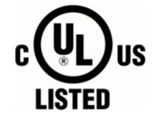 |
 |
Beyond Certification: The Wider Implications of UL Listing
The value of obtaining a UL Listing extends far beyond the certification itself. Regulatory bodies and jurisdictions frequently favor products that carry the UL Listed mark, associating them with superior quality, safety, and compliance. This preference facilitates the approval and permitting process, particularly for critical infrastructure components such as Oldcastle Infrastructure’s Primex enclosures, making them the go-to choice for projects requiring the highest safety and quality standards.
UL Listed and UL Recognized marks are more than just certifications; they reflect Oldcastle Infrastructure’s relentless pursuit of excellence. Through meticulous testing and a steadfast commitment to global standards, Oldcastle Infrastructure reassures customers of the unmatched quality and safety of its products. This commitment paves the way for smoother project executions and fosters lasting trust, positioning Oldcastle Infrastructure as a leader in delivering products that not only meet but redefine industry benchmarks for safety and quality.
In the early stages of electric vehicle (EV) adoption in the U.S., Oldcastle Infrastructure is taking a leading role in pioneering scalable and sustainable eMobility solutions to empower our partners for success. Our strategic collaboration with a major Charge Point Operator (CPO) showcases our commitment to overcoming the traditional challenges of EV charging station installations, which were often hampered by the inefficiencies of cast-in-place (CIP) designs. These challenges included labor-intensive processes, stringent site constraints, and a heavy reliance on favorable weather conditions, all of which contributed to significant delays in deployment at a crucial time for EV adoption.
Oldcastle Infrastructure responded to these challenges by innovatively engineering a precast solution that significantly enhances the efficiency, safety, and reliability of EV charging station installations. This new approach leveraged our technical knowledge and innovation to meet and exceed the CPO’s needs.
The development of the EVNext Precast Concrete Pad exemplifies our collaborative and innovative approach. Designed through a series of iterations and rigorous hands-on testing, this solution effectively addressed key challenges such as wiring conduit feed issues. By creating multiple blockouts in the pad and optimizing the slab design for precast concrete manufacturing, Oldcastle Infrastructure not only streamlined the installation process but also significantly reduced labor, setup, and site-preparation costs.
This turnkey solution, now being rolled out across the country, simplifies the installation process to a single day, reducing the impact of weather delays and standardizing the product for nationwide use. It represents a substantial advancement in the industry, providing a standardized, efficient, and future-ready solution that supports the rapid expansion of EV charging networks.
Oldcastle Infrastructure’s entry into the eMobility market with this innovative solution underscores our commitment to sustainability and the development of infrastructure that meets the future’s demands. To discover more about how Oldcastle Infrastructure is revolutionizing the EV charging landscape and to delve deeper into our innovative solutions, we invite you to explore our full lineup of EV solutions. Visit EV Charging Infrastructure Solutions Center for additional case studies and insights into how we are driving sustainable change in the eMobility sector. Join us in shaping a sustainable transportation future.
In our ever-evolving battle against climate change, the resilience of our utility infrastructure is being put to the test like never before. I’ve seen firsthand how extreme weather events are challenging the very backbone of our communities—our power grids. Drawing from my experiences and what we’ve observed in places like Florida and Detroit, it’s clear that a shift towards proactive engagement and strategic foresight is not just necessary; it’s imperative.
Take Florida, for example. The state’s journey, especially in the aftermath of hurricanes, is a powerful testament to the value of preparedness. Following the devastation caused by Hurricane Wilma, a Florida utility provider embarked on a transformative grid hardening initiative. With an investment surpassing $3 billion, the focus was to enhance the resilience of the power grid to withstand the fury of nature. This wasn’t just about rebuilding; it was about reimagining our approach to infrastructure, making it not just resistant but resilient in the face of hurricanes. Benefiting all Floridians, this initiative significantly reduced outage durations and improved the reliability of power supply, showcasing the effectiveness of readiness and adaptation.
Parallel to Florida’s strides, we see Detroit beginning to chart a similar course. Faced with its unique climatic challenges, notably severe winter storms, Detroit is on the brink of a significant infrastructural evolution aimed at fortifying its grid’s resilience. While the specifics of Detroit’s plans are still taking shape, the underlying intent mirrors that of Florida’s success: to proactively strengthen the infrastructure against the specific weather challenges it faces.
These narratives, drawn from the front lines of our fight against climate-induced adversities, underscore a broader theme of resilience and innovation. It’s about more than just weathering the storm; it’s about ensuring our communities remain vibrant and operational, come what may. The stories of Florida and Detroit serve as beacons of hope and blueprints for a future where our utility infrastructure can stand resilient against the caprices of nature.
As we navigate the complexities of a changing climate, the importance of preemptive action and strategic investment in our utility infrastructure cannot be overstated. It’s a call to action for all of us—utility providers, policymakers, communities—to rally together and champion the cause of resilience. By drawing inspiration from the successes of Florida and Detroit and leveraging the power of innovation, we can ensure that our power grids are not just prepared for the next storm but are built to thrive in the face of it.
In this ongoing journey towards resilience, I invite you to learn more about how we can support your community in this endeavor through our utility distribution solutions. Our efforts are geared towards not just addressing the immediate challenges but setting the foundation for a sustainable and resilient energy future. Together, we can turn the tide against climate change and light the way forward for generations to come.
In the dynamic world of infrastructure and construction, my path led me to become the Director of Product Management and Regulatory Affairs at Oldcastle Infrastructure. Recently, this role has grown to encompass Business Development for the Stormwater division. This evolution mirrors the industry’s growing focus on adopting and integrating transformative technologies and methodologies to address complex challenges in the water industry. My position represents not just a title, but the confidence entrusted in me and the teamwork that’s reshaping our sector. It places me at the heart of our shared goal to drive innovation and sustainable practices forward.
My path to Oldcastle Infrastructure was not just a career move but a deepening of my commitment to environmental stewardship, particularly in the realm of water conservation. Aware of the challenges posed by the arid conditions in Southern California, my true potential to effect change crystallized after joining Oldcastle Infrastructure. My focus on stormwater management evolved from an interest into a professional calling, underscored by the critical need for sustainable solutions within the infrastructure sector.
Here, my journey into stormwater management became a collaborative venture, marked by significant growth and learning. The mentorship and support from colleagues were instrumental, fueling my passion and driving our shared vision. This nurturing environment not only helped me navigate challenges but also enriched my leadership skills and innovative thinking, emphasizing the importance of community and ecosystem protection through our work.
Looking ahead, I see a future brimming with opportunities for women in this evolving field. The industry is at the cusp of a transformative era, with technology and sustainability at its heart, opening doors to groundbreaking innovation and leadership. To women aspiring to join this impactful field, my advice is rooted in my own experiences: Embrace your unique perspectives, actively seek mentorship, and commit to lifelong learning. Challenges are inevitable, but they are the steppingstones to personal and professional growth.
Celebrating the achievements of women in construction is not just about recognition; it’s a call to action for a more inclusive, forward-thinking, and eco-conscious future. By championing change and supporting one another, we have the power to dismantle barriers and redefine industry standards.
This moment is more than a time for reflection—it’s an opportunity to envision the limitless possibilities that lie ahead. It’s a call to each of us to lead by example, to drive change, and to uplift one another in our shared pursuit of excellence. As we move forward, let’s stay committed to nurturing an industry that exemplifies diversity, resilience, and ingenuity.
Let’s harness our collective diversity and determination to not only transform our industry but also to leave a lasting impact on the world. I extend an invitation to those ready to embark on this transformative journey: consider building your career with Oldcastle Infrastructure and CRH, where you can grow, make a difference, and contribute to a legacy that benefits our communities. Together, let’s build, innovate, and inspire, creating a sustainable legacy for generations to come.
At Oldcastle Infrastructure, we are more than manufacturers; we are collaborators, innovators, and stewards of the environment. Our commitment to sustainability and ecological conservation is showcased in our work on fish passage in Washington state, from the transformation of NE Woodinville Duvall Road in King County to our recent collaborations with Strider Construction on finding and implementing custom solutions for complex fish passage projects. We aim to seamlessly blend robust infrastructure with the natural environment, providing durable, low-maintenance solutions that facilitate the restoration of fish migration paths.
The NE Woodinville Duvall Road project exemplifies our collaborative spirit and engineering expertise. In replacing an old metal pipe culvert with a modern concrete box culvert, we did more than upgrade a piece of infrastructure. We undertook a significant ecological restoration, enhancing fish passages to bolster local biodiversity. This project was a testament to our ability to navigate complex challenges through close collaboration with local authorities and stakeholders, ensuring that our solutions are not only effective but also sustainable.
Our projects with Strider Construction further highlight our extensive expertise in tackling complex challenges posed by deep installations and specialized equipment requirements. These endeavors demonstrate Oldcastle Infrastructure’s proficiency in managing large-scale, technically intricate projects. Working alongside Strider, we crafted tailored solutions to address the distinct environmental and technical needs of each project, all while preserving the natural ecosystems. This partnership highlights our problem-solving abilities and our dedicated commitment to achieving common objectives by seamlessly collaborating with all project stakeholders.
Safety is our cornerstone at every phase of our projects, from inception to execution. We uphold stringent safety measures that span the entire lifecycle of a project, ensuring the well-being of our team, the community, and the environment. In our manufacturing processes, we’ve optimized culvert production by centralizing operations. This allows all lifting, rolling, and loading activities to be conducted indoors with the aid of bridge cranes, minimizing hazards and enhancing efficiency.
Our commitment to safety extends to the meticulous selection and collaboration with trusted freight carriers. We devise and employ meticulously engineered loading plans, meticulously crafted to mitigate risks and secure the safe transit of our products on public roads. This careful approach to planning and execution embodies our dedication to safety, underscoring it as a fundamental aspect of our operational ethos. It’s a reflection of our core values, where responsibility and meticulous care are woven into the fabric of our work culture, ensuring that safety is not just a regulatory requirement but a key pillar of our identity.
A notable moment that encapsulates our commitment to environmental stewardship occurred when a team member, while dining with his family near a recently completed project site, witnessed salmon fry navigating through the restored waterway. This observation underscored the significant impact of our work, highlighting the role our projects play in revitalizing local ecosystems and enriching community life.
Our ability to handle a high volume of work, such as the production and scheduling the installation of numerous culverts across a magnitude of project sites, displays our operational capabilities and reliability. Last year’s record of completing more than twenty fish passage projects, each with its unique challenges and requirements, stands as a testament to our scalability and commitment to excellence.
Explore the dynamic connection between innovation and ecology with Oldcastle Infrastructure’s Fish Passage Solutions Hub. Our dedicated page highlights the transformative Pepin Creek project and offers an exclusive opportunity for a plant visit, allowing you to step directly into Oldcastle Infrastructure.
The United States finds itself at a crucial juncture where its water systems—many of which were built in the early to mid-20th century—are in desperate need of significant repair or replacement.
The repercussions of this deterioration are vast, affecting everything from public safety and environmental sustainability to economic stability and national security.
The American Society of Civil Engineers has sounded the alarm, emphasizing the urgent need for strategic action with sobering grades of C-, D+, and D for the nation’s drinking water, wastewater, and stormwater infrastructure respectively.
They estimate that a monumental investment of $5.94 trillion is required to address the challenges posed by our aging infrastructure—a figure that dwarfs the $1.2 trillion allocated by the 2021 Infrastructure Investment and Jobs Act.
This stark contrast underscores the magnitude of the task at hand.
Recent examples are numerous and include an outdated and “failing” stormwater network in San Diego causing severe property damage, communities large and small running out of drinking water due to broken and leaking pipes, and hundreds of thousands of gallons of untreated sewage leaking due to system breaks.
These recent events serve as a steady reminder of the importance of modernizing our water treatment facilities, enhancing watershed management, and investing in infrastructure capable of adapting to changing environmental conditions.
The path forward demands innovative solutions and collaborative efforts across various sectors. By leveraging advanced materials, digital twins, artificial intelligence, and smart infrastructure technologies, we can revolutionize the way we maintain and monitor our infrastructure – shifting from a reactive approach to a proactive one. These advancements promise not only to extend the lifespan of our infrastructure components but also to enhance their adaptability and responsiveness to emerging challenges.
As we focus on the critical issue of water infrastructure, the significance of building and developing efficient, resilient systems becomes clear. A key example is in finding, repairing, and preventing water loss from aging drinking water networks.
Tackling non-revenue water and implementing state-of-the-art water loss solutions is paramount for the sustainability of our water resources. Oldcastle Infrastructure is at the forefront of providing innovative solutions to these challenges, ensuring our water infrastructure meets the demands of today and tomorrow.
We encourage all who are invested in the future of our water systems to explore the cutting-edge solutions we offer for non-revenue water and leak detection.
By taking proactive steps now, we can secure the reliability and efficiency of our water infrastructure for future generations.
Learn more about how we can revolutionize water management and conservation by learning more about our Non-Revenue Water Leak Detection solution. The time to act is now, for a sustainable and water-secure future.
In our previous article, we explored the initial rollout of the National Electric Vehicle Infrastructure (NEVI) Formula Program, a cornerstone in revolutionizing the United States’ transportation sector. Supported by substantial funding from the Infrastructure Investment and Jobs Act (IIJA), NEVI began its mission to establish a comprehensive EV charging infrastructure. This article delves into the progression of NEVI’s funding and its significant impact on the expansion and development of this infrastructure.
The journey of state participation in NEVI begins with meeting the initial program requirements, which include developing a comprehensive plan for EV charging infrastructure deployment and ensuring interoperability of charging stations across networks. Once these criteria are achieved, states become eligible for their share of the $5 billion funding. The process ensures that each state’s plan aligns with NEVI’s vision of creating a nationwide network of reliable EV charging stations. This funding structure is not just a monetary boost; it’s a catalyst for growth, enabling states to develop and expand their EV infrastructure beyond the minimum stipulations.
As funds are allocated, states embark on a transformative path. From purchasing state-of-the-art charging equipment to upgrading existing power grids, the allocated funds ensure that the infrastructure developed is both robust and future-proof. This approach fosters sustainable expansion, ensuring EV infrastructure development keeps pace with the growing demand for electric vehicles.
Looking ahead, in years 2-4, we expect to see an acceleration in the establishment of charging stations, with a focus on covering more geographical areas, including rural and underserved regions. As the program progresses, we may witness adaptations in strategy, possibly to incorporate emerging technologies or to address unforeseen challenges in deployment.
States are actively strategizing to embrace these upcoming challenges and opportunities. The preparation involves meticulous planning and cross-sector collaboration to ensure that the expansion of alternative fuel corridors is not just swift but also sustainable. State governments are engaging with local communities, businesses, and utility providers to ensure a cohesive approach towards building this green infrastructure.
As we reflect on NEVI’s funding, progression, and future, it’s clear that the program is not just about constructing charging stations; it’s about laying the groundwork for a cleaner, more sustainable transportation ecosystem. The strategic expansion of alternative fuel corridors is pivotal in achieving this goal.
Stay tuned for the final part of this series, where we will delve into NEVI’s long-term vision. We will explore how NEVI plans to sustain its momentum and the lasting impact it aims to create in transforming America’s transportation landscape.
Visit our EV Infrastructure Solutions Center to access a wealth of resources and discover our extensive and adaptable product range.
Low-Impact Development and Green Infrastructure
In recent years, the concept of Low-Impact Development (LID), coupled with the use of green infrastructure, has emerged as an effective approach to tackle the pressing issue of surface water pollution.
LID is a design strategy aimed at mimicking the natural water cycle that gets disrupted by urban development. As our cities and towns expand with new buildings, roads, and airport runways, it’s vital to mitigate the impact that those newly impervious surfaces can have on the natural ecosystem.
LID employs green infrastructure systems, such as green roofs, vegetated swales, and biofilters, designed to reduce runoff and improve water quality by removing target pollutants such as total suspended solids (TSS), nutrients and hydrocarbons.
How BioPod delivers on green infrastructure goals
One such biofilter is Oldcastle Infrastructure’s BioPod™. Verified as a leading green infrastructure technology by NJCAT and used to satisfy urban sustainability goals and pollutant removal regulations, this biofilter is a proven LID solution, designed to remove a variety of pollutants including large solids, finer sediments, nutrients from fertilizers and metals from vehicle brake pads.
What makes BioPod stand out is its ability to support different types of trees and shrubs, thereby enabling the re-establishment of natural environments within urban settings, while simultaneously filtering stormwater runoff.
The BioPod’s unique advantages include its rapid deployment and compact footprint: as a nationwide stormwater solutions provider, Oldcastle Infrastructure produces BioPod systems at locations right across the country, significantly reducing lead times in comparison to other products.
The core of the BioPod is the StormMix, an engineered media optimized for high flow rates, which lessens the area needed for effective stormwater management.
One notable implementation of BioPod was at Medford Airport in Oregon, where its application reduced the land required for stormwater management by an impressive 70% when compared to a traditional bioswale.
For property owners, design engineers and construction contractors, adopting green LID solutions like the BioPod doesn’t mean compromising on project timelines or efficiency. Oldcastle Infrastructure is at the forefront of redefining construction norms, championing the swift and cost-effective production of stormwater management systems that not only comply with sustainable construction practices but actively protect our natural water resources.
The BioPod, with its blend of environmental sensitivity and practical utility, is indicative of the forward-thinking solutions necessary to safeguard our water resources for future generations. Its success in various projects, as at Medford Airport, serves as a testament to its efficacy and adaptability.
As we continue to explore and innovate in the realm of stormwater management, green infrastructure solutions will help pave the way for a more sustainable and harmonious coexistence with our natural world.
Next
As we continue our exploration into the importance of broadband connectivity, the focus shifts to the unique challenges of extending this vital technology to rural and remote areas. Despite the unparalleled connectivity offered by fiber optic networks, their deployment in less accessible regions encounters several obstacles, highlighting the complexities of bridging the digital divide in these communities.
A July 2022 study by Dgtl Infra illuminates the high costs associated with deploying fiber optic networks in rural areas. These expenses, encompassing everything from raw materials to the laying of infrastructure, are substantially higher in regions lacking existing structures, where difficult terrain and extended distances add layers of complexity.
The skilled labor required for fiber optic cable installation is another major cost factor. Rural areas often lack workers with the necessary specialized training, leading to the need for bringing in teams from more urbanized areas, thus inflating the overall costs. The situation is further compounded by the complex and expensive equipment needed for such installations.
At Oldcastle Infrastructure, we’re acutely aware of these challenges and have dedicated ourselves to developing communication technology solutions that address them. Our aim is to facilitate achievable broadband access in underserved areas with innovative, cost-effective strategies.
Our range of products includes enclosures and connectivity components designed to withstand a variety of environmental conditions, guaranteeing the durability and reliability of network infrastructures in rural contexts. The resilience of these components is critical, particularly in areas where maintaining infrastructure poses additional challenges. Our commitment to quality and innovation ensures that once a network is in place, it provides stable and reliable connectivity for the community.
By confronting the challenges of rural and remote communities directly, we’re positioned to make substantial progress in providing equitable broadband access, thereby enriching and empowering communities.
Discover the complete Primex lineup of enclosures here.
As the Business Director for eMobility at Oldcastle Infrastructure, I embarked on an unconventional expedition with my colleague, Richard (Rich) Childs, the eMobility Global Sales Manager. Instead of a flight, we opted for a cross-country road trip in an electric vehicle (EV), journeying from Atlanta to San Francisco. The goal? To gain an intimate understanding of America’s EV landscape, which is crucial for our roles in expanding Oldcastle Infrastructure’s presence in the EV infrastructure sector.
The Genesis of Our Adventure
Starting in Atlanta, our journey was more than just a road trip; it was a deep dive into the practicalities of EV travel. Choosing a long-range electric vehicle was not just for travel convenience; it served as our mobile laboratory.
Facing Challenges Head-On
Our first charging stop on day one was eye-opening. The ease of use and availability of charging options were promising. However, as we ventured further, we realized that this convenience was not universal. Charging station availability and conditions varied drastically. Journeying through diverse terrains and climates from Georgia to California, each state presented unique challenges and insights. The ever-changing landscape tested both our EV’s capabilities and our adaptability.
The trip was not without its trials. Weather conditions, such as extreme cold in Arizona, impacted battery efficiency. We encountered several charging stations that were out of service or in need of maintenance, and many lacked basic amenities.
We learned to rely on our vehicle’s navigation system for optimal charging stops, a strategy that proved crucial, especially when facing unexpected environmental challenges. Moments like reaching a charging station with just 5% battery left in Arkansas were nerve-wracking but provided invaluable lessons in energy management.
These experiences underscored the urgent need for a more robust and reliable EV infrastructure and the crucial role of initiatives like the National Electric Vehicle Infrastructure (NEVI) Formula Program. NEVI’s aim to fund and support the development of a nationwide EV charging network perfectly aligns with the needs we experienced firsthand. Such support is essential for establishing a reliable and accessible charging infrastructure.
Reflections on the Road Ahead
Our expedition was a blend of adventure and professional discovery. We learned not only about the current state of EV infrastructure but also about its vast potential and pressing challenges. We returned with a clearer vision for our role in shaping the future of EVs. The journey reinvigorated our commitment to developing innovative solutions for the EV market by exploring partnerships and delving into advanced charging infrastructure designs, including modular solutions adaptable to various environments. This cross-country trip reinforced our belief in the potential of the EV market and the critical role of infrastructure in its growth.
This trip is also a testament to the need for programs like NEVI. Such initiatives will bridge the gaps we experienced, making EV travel not just a possibility but a practical, everyday reality. You can delve into more insights on NEVI in the informative series From Plan to Pavement by my colleague Chris Graham, eMobility Business Development Manager.
Rich often joked about being the funniest person in the car, but our experience was a serious exploration of America’s readiness for an EV revolution. We started as casual drivers but returned as seasoned navigators of the electric roads. This journey, daunting yet enlightening, has armed us with invaluable insights, setting the stage for Oldcastle Infrastructure to contribute meaningfully to the burgeoning EV market.
Discover the innovative EV charging infrastructure solutions and comprehensive resources offered by Oldcastle Infrastructure, and take a step towards a sustainable, electrically powered future.
The Infrastructure Investment and Jobs Act (IIJA) of 2021 marks a pivotal moment for bridge infrastructure across the United States. Central to this transformative act is the Bridge Formula Program (BFP), a visionary five-year initiative that channels an inspiring $27 billion into revitalizing bridges from 2022 to 2026. This program is a beacon of hope, especially for smaller bridge projects that are often overshadowed by larger infrastructure endeavors.
The BFP stands out for its inclusive approach, ensuring that even the smallest bridges, which play critical roles in local communities, receive attention and funding. These bridges, though small, are significant in their contribution to daily life, facilitating local commutes, supporting economies, and preserving vital community connections.
The program’s impact is evident in states like Utah, which benefits from a dedicated minimum annual funding of $45 million. This funding is instrumental in addressing bridges that have been worn down by time and use. Moreover, Utah’s infrastructure efforts are bolstered by the presence of Oldcastle Infrastructure plant locations, strategically situated to support the state’s bridge revitalization efforts. These facilities enable the production and timely delivery of precast concrete components, which are essential for the rapid construction and renovation of bridges, particularly in rural areas where transportation logistics can be challenging.
The spirit of the BFP is national, with each state finding unique ways to apply these funds effectively and innovatively. A notable aspect of the BFP’s implementation is the integration of modern construction methods, such as the use of precast concrete. This approach, exemplified by companies like Oldcastle Infrastructure, offers numerous advantages: rapid installation that minimizes disruptions, adaptable solutions suitable for diverse geographic and environmental conditions, and long-lasting durability. The shippable nature of precast components from Oldcastle Infrastructure’s Utah plants to rural areas ensures that even the most remote bridges can benefit from modern construction techniques.
The Lone Tree Bridge in Utah’s transformation serves as a prime example. Originally conceived as a steel plate structure, it was re-envisioned through the BFP as a precast concrete bridge, spanning 26 feet with a 13-foot rise. This modification not only sped up construction but also underscored the potential for innovation in bridge construction.
Feedback from those involved in projects like the Lone Tree Bridge underscores the practical benefits of these innovations. Quick installation times, high-quality results, and the ability to meet unique project demands are just some of the advantages that have been observed on the ground.
The Bridge Formula Program under the IIJA represents an essential step forward in addressing the needs of bridge infrastructure across the United States. It’s not just about building new bridges; it’s about reinforcing the connections within our communities, enhancing safety, and embracing new technologies to meet the demands of the 21st century. The program is a testament to the commitment to improve and innovate in the realm of infrastructure, ensuring that even the smallest bridges receive the attention and care they deserve, with the support of accessible, efficient precast solutions from facilities like those of Oldcastle Infrastructure plants in Utah that service Idaho, Montana, Nevada, and plants nationwide.
The National Electric Vehicle Infrastructure (NEVI) Formula Program, bolstered by the Infrastructure Investment and Jobs Act (IIJA), and supported with $5 billion of funding, stands at the forefront of a major transformation in the United States’ transportation sector. As a key initiative under the Federal Highway Administration’s strategic efforts, NEVI is redefining electric vehicle (EV) charging infrastructure, setting the stage for a more sustainable future. With the IIJA’s backing and the substantial NEVI funding, the approval and initial funding of state plans for EV charging infrastructure deployment through NEVI mark the beginning of a significant shift towards eco-friendly transport solutions.
NEVI’s rollout strategy is marked by detailed planning and methodical execution. The program mandates that states ensure a network of charging stations at intervals of every 50 miles along designated alternative fuel corridors. This stipulation is not merely about achieving numerical targets; it is fundamentally about guaranteeing accessible and dependable charging solutions for EV users. Such measures are crucial in fostering public trust and confidence in EV technology.
States are adopting various approaches to align with NEVI’s guidelines. California, a pioneer in alternative fuel infrastructure, is actively working to identify and address gaps within its existing network of alternative fuel corridors. Meanwhile, states with less developed EV infrastructure are faced with the arduous task of constructing these frameworks from the ground up. This diversity in starting points necessitates adaptable strategies, considering each state’s existing infrastructure and geographical challenges.
The initial phase of rolling out NEVI’s requirements presents substantial challenges. These include logistical issues in locating suitable sites for charging stations, ensuring proximity to highway exits, and meeting the power output requirements of at least 150 kilowatts per charger. Despite these hurdles, tangible progress is being made, facilitated by collaborative efforts between state governments and federal authorities.
As NEVI unfolds, its role transcends infrastructure development; it’s becoming a pivotal element in fostering an environmentally sustainable future. For engineers and government officials, a thorough understanding of this program’s complexities and challenges is essential for its successful implementation. NEVI is not just about setting up charging stations; it’s about pioneering a path towards an eco-friendlier, more efficient transportation system.
NEVI’s initial phase goes beyond typical infrastructure projects, marking a pivotal step towards a sustainable future. Grasping its complexities is essential for effective implementation. We encourage you to delve into our EV charging infrastructure solutions and resources. For further insights into alternative fuel corridors, please refer to the information provided by the Federal Highway Administration (FHWA).
Broadband connectivity has become an integral part of our modern life, deeply interwoven into our routines and as vital and indispensable as the roads that connect our cities and towns. Microsoft’s 2021 study brings this into sharp focus, revealing that one out of three Americans, roughly 120.4 million, access the internet via standard broadband connections. This insight, grounded in the Federal Communications Commission’s (FCC) broadband speeds benchmark of 25 Mbps download and 3 Mbps upload, underscores a nation teetering on the brink of a digital revolution, yet hindered by uneven access.
Broadband Now’s 2021 study adds another layer to this complex narrative, highlighting that over 42 million Americans have inadequate broadband service. This stark digital divide is more than a technological shortfall; it represents a barrier to education, business opportunities, and personal growth in our increasingly interconnected world.
In response to this pressing issue, federal initiatives have emerged as powerful agents of change. The Broadband Equity Access and Development Program, a pivotal piece of federal legislation, has earmarked an impressive $42.25 billion to enhance national broadband infrastructure. This initiative, along with earlier FCC efforts like the Universal Service Fund and the Rural Digital Opportunity Fund, reflects a determined push to deliver broadband to every corner of the nation, ensuring equitable access to the digital realm for all Americans.
The quest for widespread connectivity has led the industry to pinpoint fixed wireless and fiber optic networks as the most effective solutions. These technologies, working in concert, offer a comprehensive approach to overcoming connectivity challenges. Fiber networks, capable of transmitting data at the speed of light, provide the high-speed backbone essential for our digital demands. In parallel, fixed wireless networks bring adaptability and scalability, crucial for reaching subscribers in varied and remote landscapes.
The significance of these technological advances in the mission to expand broadband access is monumental. They serve not only as conduits for connectivity but also as tools for bridging economic and educational divides, fostering a more inclusive and equitable society.
Water scarcity is a pressing global issue, ringing alarm bells across the world. It’s a threat that impacts everything from our health to finances and even national security. It’s a challenge that knows no borders, affecting every part of the globe, including the United States, where 40 out of 50 states could face water shortages within the next year.
Water Scarcity and Aging Water Infrastructure
This looming crisis is largely fueled by aging infrastructure in our water systems. These outdated systems are like ticking time bombs, prone to leaks and breakdowns, which contribute significantly to water scarcity. A critical aspect of this problem is non-revenue water (NRW) – water lost due to leaks, theft, or metering inaccuracies before it reaches the consumer. It’s a startling fact that around 35% of all treated drinking water globally is lost as NRW each year, with the United States alone losing 6 billion gallons of treated drinking water daily due to leaks.
The financial impact of NRW is substantial. It places a heavy burden on communities, with U.S. municipalities and local water utilities losing an estimated $7.6 billion in NRW each year. These high operational costs can lead to increased water bills and hinder investments in infrastructure upgrades.
Traditionally, addressing NRW has involved manual and somewhat outdated methods. However, we’re now seeing a shift towards more innovative solutions. The integration of Artificial Intelligence (AI) and real-time sensing technologies is revolutionizing the way we detect and manage water leaks. These advanced technologies enable utilities to identify leaks quickly and efficiently, even in remote areas, preventing them from becoming larger problems.
Fighting Water Scarcity Through Strategic Partnership
Our collaboration with FIDO Tech exemplifies the potential of these technologies. By combining expert field teams, advanced sensors, and AI with an industry leading accuracy, we can detect, size, and locate leaks precisely and prioritize repairs effectively. This approach not only minimizes water loss but also reduces operational costs.
Beyond technology, government and community involvement are essential. Governments play a crucial role in encouraging investment in infrastructure upgrades and water loss audits. Community awareness and participation are also key in promoting sustainable water use and conservation efforts.
Download the Whitepaper – Water Scarcity and Water Loss: Innovative Transformational Technology to Address a Looming Global Crisis
While water scarcity is a significant challenge, the combination of innovative technologies, policy reforms, and community engagement presents a viable solution. By addressing NRW effectively, we are taking essential steps towards a more sustainable future. Discover our innovative approach to tackling water scarcity and NRW in our comprehensive white paper, Water Scarcity and Water Loss: Innovative Transformational Technology to Address a Looming Global Crisis.
The first electrical system went up sometime in the early 1900s, with the focus on illuminating the insides of homes and replacing the dangerous gas streetlights prevalent at the time. Fast-forward to the digital millennium, our infrastructure is aging and it is our job to be aggressive in replacing it with options engineered and designed to stand the test of time. We rely more and more on technology – from the internet to medical systems, monitoring devices, even cars – resulting in increasing dependence on our electrical grid. The reliability of this grid is the key to our national security and everyday wellbeing.
In the face of potential disasters from fire, age failure, and even attacks on substations, it’s our job to keep them running and keep them safe. Reliability is the key word for our success in this endeavor: choosing preventative measures and products that will contribute to the protection over time of the grid is paramount.
Firewalls
Within an average substation, transformers – each containing thousands of gallons of oil – stand side-by-side. If one were to catch fire, it would most likely spread quickly to the others. This is where a good, solid firewall comes in. A quality firewall will not only stand between the transformers, but it will also enclose each firewall within a specified fire rating. These firewalls are available non-fire-rated, or with two- or four-hour fire ratings. Four-hour fire ratings are often chosen for rural areas when first responder response time might be longer than average, but the reality is, the four-hour rating option is the best choice. As a transformer burns, they emit ambient heat even with a firewall. A shorter fire rating means potentially greater heat on the other side. And the longer it burns, the more the transformer next door heats up. Given the utter devastation a fire can cause in a substation, why take chances with anything less than a firewall with a four-hour fire rating?
Security walls
Human impact on substations has been in the news with recent acts of vandalism and gun fire attacks. Properly chosen perimeter walls, taking into consideration line of sight, provide a necessary added layer of protection for substations and all that they contain.
Trenches to secure communication lines
Substations are filled with switches and transformers, all of which are now digitally managed. While power cables are up in the air, the substation control cables are housed in trenches in the ground. If cabling is disturbed, control of the substation will be lost. Some of these cables are upwards of 50 years old and have experienced the effects of weather, car impact, and even human impact. Without proper protection, these cables can fray and break, rendering them unusable.
One solution is a belowground, heavy-duty, high-load-resistant trench that safeguards the cabling, that is traffic-rated and improves greatly the reliability of the substation controls.
Creative, modular-based solutions
When trench replacement isn’t an option and protecting the integrity of the cables is top of mind, it’s time to look for an out-the-box solution. Picture a 50-year-old trench filled with old, brittle cables inside a failing concrete trench. How do we replace the trench to protect the cable without touching said cables? Modular enclosure products have been used creatively in such cases. No heavy equipment was needed for installation, a huge plus in the traditional space congestion found in your average substation.
As we work to maintain the electrical infrastructure, we should not be afraid to get creative in determining long-term solutions, staying focused on finding ways to accomplish the goal without causing planned or unplanned outages.
Products that securely protect the electrical grid are important now, and their importance will continue to grow over the coming decades. Now is the time to build the infrastructure for technology we don’t even know is coming.
